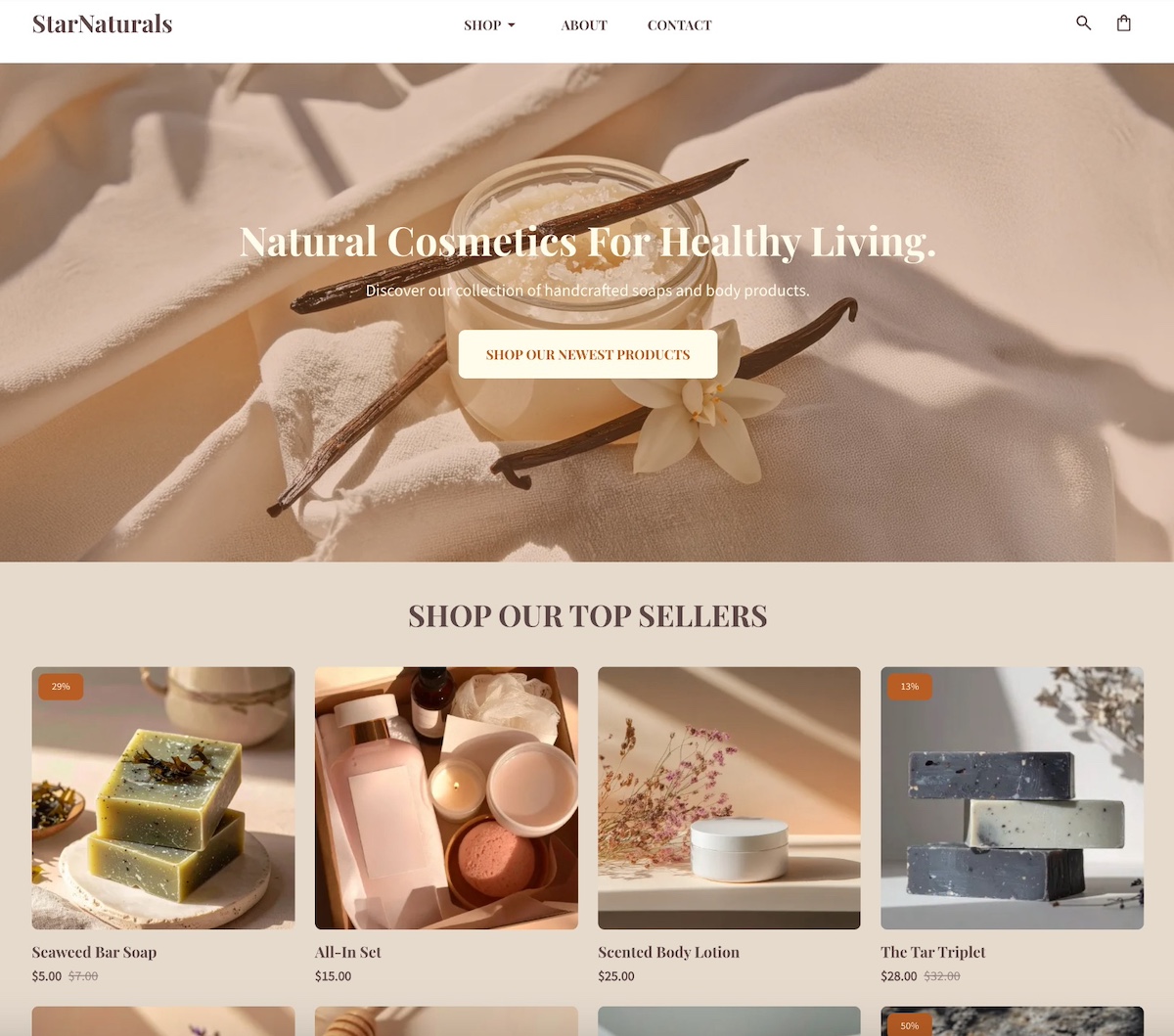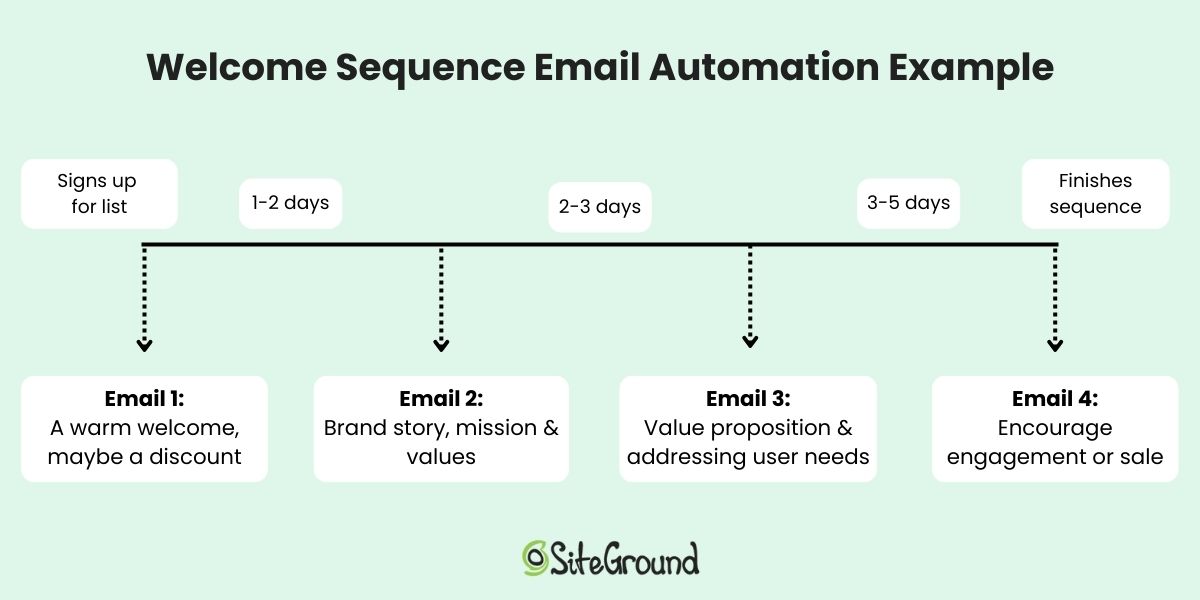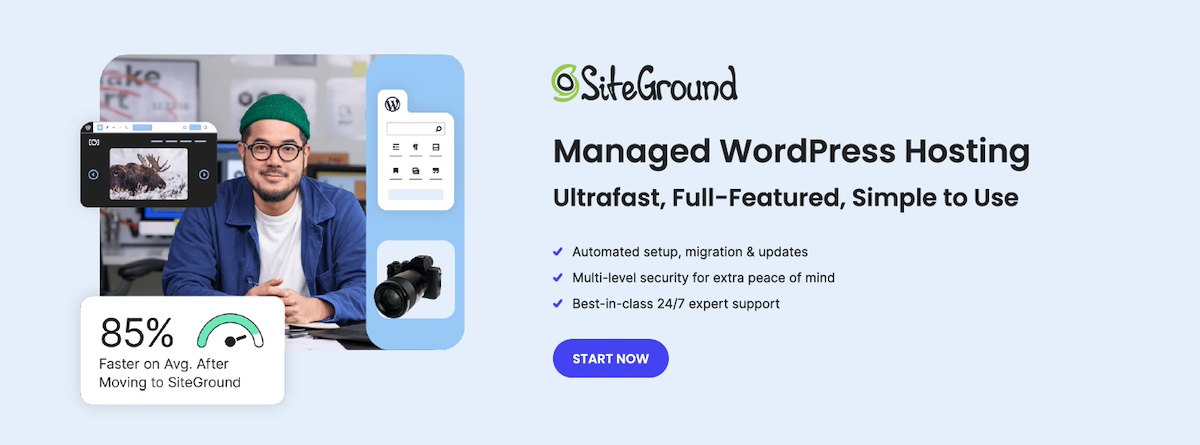10 Best Tips for Starting an Online Store on a Budget

This article was originally published in November 2019, and then updated in September 2025.
Launching a successful online store can feel a bit like packing for a cross-country road trip with just a small backpack: you want to bring everything you need, skip what you don’t, and make sure you have the essentials to get moving without being weighed down. The same goes for starting an online store on a budget—the leaner you start, the faster you can reach real customers and real sales.
In this guide, we’re sharing 10 practical tips to help online store owners build a professional, functional ecommerce site without overspending. From focusing on your core value to leveraging tools, automating tasks, and embracing AI, you’ll learn how to launch smart, stay lean, and grow your ecommerce site step by step.
Your Free Website Planning Checklist Build with clarity, launch with confidence
Google reCAPTCHA used. Privacy Policy and Terms of Service apply![]()
10 Tips for Creating an Online Store
Like preparing for that cross-country trip, getting your online store off the ground doesn’t have to be overwhelming or expensive. These ten tips will guide you through the essentials so you can launch efficiently and grow sustainably.
1. Focus on Core Value
First things first. When launching an online store on a budget, less is often more. Instead of offering a wide range of products from day one, focus on a small, high-value selection that clearly communicates what your brand is about. This makes your online store easier to manage, helps you avoid overspending on inventory, and lets customers quickly understand your offer.
Narrow your focus by identifying what problem you’re solving, and which products best showcase your brand’s strength. In doing so, you can create a profitable online store that feels purposeful rather than overwhelming.
A simple, well-curated online store also makes it easier to test your business model. You can gather real customer feedback, see which products resonate most, and gradually expand your offerings. Remember, it’s much easier—and cheaper!—to add products later than to try and fix a cluttered, unfocused online store.
Quick tips for focusing on core value:
- Launch with your best-selling or flagship products.
- Keep your product descriptions clear and benefit-oriented.
- Avoid adding unnecessary features or complicated checkout processes early on.
- Use simple, clean design to highlight your products and messaging.
2. Identify Your Target Audience
Understanding your customer will help you focus not only on the right products, but also on the most effective ways to approach your marketing. Without a clear picture of who you’re selling to, or where they are in the customer journey, even the best and most brilliant products or marketing strategies can hit an unfortunate wall.
So start by defining your ideal customer profile:
- Demographics: Age, gender, location, income level.
- Behavior: How they shop online, which social platforms they use, and what influences their buying decisions.
- Pain points and desires: What does my customer struggle with and what is the benefit my product provides?
Knowing this helps you make smarter decisions about your product selection, store design, messaging, and promotions. For example, if your target audience values sustainability, you can highlight eco-friendly packaging or sourcing in your product descriptions and marketing.
Quick tips to get clear on your customer:
- Create a simple customer persona to guide decisions.
- Study competitors to see who they’re targeting.
- Engage with potential customers and your target audience via survey emails, social media, or early testers.
Pro Tip: Make Customer Insights Actionable with SiteGround Email Marketing
Understanding your customers is just the first step; the next is reaching them effectively. With SiteGround Email Marketing, you can turn insights into action by segmenting your list, sending targeted campaigns, automating follow-ups, and personalizing promotions. It’s a simple way to connect with your customers, nurture relationships, and drive more online sales—all while keeping your marketing lean and efficient.
3. Define Your Unique Value Proposition
Your Unique Value Proposition (UVP) is what sets your online store apart from the competition. It’s more than just your product; it’s the reason customers will choose you over someone else. A strong UVP gives your online store purpose, focus, and a story that invites people to buy.
We’ve already defined your product, what problem it solves, and for whom, so for the UVP, we’re putting it all together, including why your offering is different or better than others on the market.
Your UVP can be based on anything that adds real value: superior quality, unique design, faster shipping, excellent customer service, or even a creative brand story. Once you know it, your UVP should be clearly reflected in your online store’s homepage design, product and service pages, and marketing messages—so visitors instantly understand why they should buy from you.
Quick tips to define a strong UVP:
- Keep it concise: One or two sentences should be enough.
- Focus on benefits, not just features.
- Highlight what makes you different (don’t just copy competitors).
- Test your UVP with potential customers to see if it resonates.
4. Choose Web Hosting Built for Security, Speed & Performance
Whether you’re building your online store with a CMS like WordPress, or having it custom coded, you’re going to need ecommerce website hosting. And while it’s tempting to go with the cheapest hosting you can find, cutting corners here can actually cost you more in the long run. Slow sites drive customers away, downtime kills sales, and weak security puts your reputation at risk.
So the leanest approach is in fact to start with a host that already covers the essentials: speed, reliability, and protection.
With SiteGround Web Hosting, for example, you don’t need to stack on extra plugins or pay for costly add-ons to keep your online store running smoothly. Ultrafast PHP, custom caching, and Google Cloud infrastructure ensure your site loads quickly. At the same time, free SSL certificates, AI-powered anti-bot protection, a web application firewall, and daily backups safeguard your online business and your customers’ data. And it’s all included in your plan.

Quick tips for hosting smart on a budget:
- Think long-term: reliable hosting prevents hidden costs from lost online sales or security issues.
- Use built-in tools (like SiteGround’s SSL, caching, and backups) instead of paying for third-party add-ons.
- Focus your budget on growth areas (like marketing or product development) instead of patching site performance later.
If you’re using WordPress, SiteGround also offers free plugins to make optimization effortless. The SiteGround Speed Optimizer plugin boosts website speed with caching, image optimization, and performance tweaks, while the SiteGround Security Optimizer plugin adds an extra layer of protection with AI-powered threat detection, firewall management, and login hardening. Together, they help you keep your online store fast, secure, and running smoothly whether you’re a SiteGround customer or not.
5. Focus Only on Essential Pages
Even a small online store needs a few key pages to check all the necessary business boxes. These pages don’t have to be elaborate, but they should clearly communicate your brand, offerings, and policies.
Essential website pages to include:
- Homepage: Highlight your core offerings and your UVP with a strong call to action.
- Product or Service Pages: Whatever you sell online, whether that’s products, services, or both, these pages are where you explain what you offer, how it works, and why customers should choose you. Include clear descriptions, benefits, pricing, and high-quality visuals.
- About Page: Share your story and what makes your brand unique.
- Contact Page: Make it easy for customers to reach you.
- Policy Pages: Include shipping, returns, and privacy policies—they increase credibility and reduce disputes.

Quick tips for essential pages:
- Keep navigation simple so visitors can find your offerings and information easily.
- Use consistent branding—colors, fonts, and tone—across all pages.
- Include trust signals like having an SSL certificate, and including customer testimonials.
- Start with the basics, then expand to include other pages, such as an FAQ page or partner page.
6. Integrate Email Marketing From the Start
One of the smartest, most budget-friendly ways to grow a successful online store is by building an email list early. Unlike social media followers, your email list is an owned channel—you’re not at the frustrating mercy of algorithms or ads. And because email marketing consistently delivers one of the highest ROIs in digital marketing, it’s a lean but powerful way to drive sales.
Start small by adding email signup forms to your homepage, product pages, or even your checkout process. Focus on attracting quality subscribers rather than chasing large numbers—people genuinely interested in your products are far more likely to convert into paying customers.
Even better, you can set up email automations, like welcome emails, lead nurturing campaigns, or a product launch series. These run in the background, meaning you get more done with less effort while creating a consistent customer experience.

Quick tips for email marketing on a budget:
- Place signup forms in key locations (homepage, footer, and checkout).
- Offer value for signing up—like tips, exclusive content, or early access to new products.
- Go a step further with lead magnets: offer something small but valuable in exchange for an email address, like a discount code, a free guide, or a checklist.
- Keep your list clean: focus on engaged subscribers rather than bloating your list with uninterested contacts. Including a double opt-in can help accomplish this.
With SiteGround Email Marketing, you can handle all of this in one place—from creating branded signup forms to setting up automated workflows and even using AI tools (like a built-in AI writer) to speed up content creation—helping you launch smarter while keeping costs low.
7. Get On Board With AI
Speaking of AI, it’s no longer just for big online businesses—it’s a practical, budget-friendly tool that can give small ecommerce stores a competitive edge. Think of it as an extra set of hands: it helps you work smarter by speeding up routine tasks and giving you insights that would normally take hours to uncover.

From content creation to customer communication, AI makes it easier to keep your online store running lean. You can use it to draft product descriptions, brainstorm campaign ideas, or analyze performance data to guide smarter decisions. With the best ChatGPT prompts, you can even generate polished marketing copy, subject lines, or social media captions in minutes.
Quick tips for using AI effectively:
- Start with areas where AI saves you the most time, like drafting content for emails, your website, or campaigns.
- Explore AI business tools to help with everything from recruiting, to meeting overviews, and video creation.
- Prioritize AI ethics in marketing: stay transparent, review outputs for bias, and keep authenticity front and center.
- Treat AI as a partner in testing and optimization, helping you iterate faster.
8. Use Lean Marketing Strategies
Marketing doesn’t have to be expensive to be effective. Lean marketing focuses on low-cost, high-impact tactics that help you reach your target audience, build awareness, and drive sales—without breaking the bank.
Lean marketing strategies to try for your online store:
- Social media marketing: Share engaging content, behind-the-scenes updates, or tips related to your products or services.
- Collaborations: Partner with complementary brands or influencers to reach your target audiences through new channels.
- User-generated content: Encourage customers to share photos, reviews, or testimonials—they act as authentic endorsements.
- Email marketing: As we discussed above, email marketing is one of the best ways to get the most bang for your buck. It allows you to reach your most interested audience with targeted messages and minimal effort.
Quick tips for lean marketing:
- Focus on channels your customers actually use.
- Repurpose content across social media, email, and your website.
- Encourage customers to leave reviews or share their experiences.
- Track results and tweak your campaigns based on what works best.
9. Make Your Store Discoverable Online
Even a perfectly designed online store won’t succeed if customers can’t find it. Search Engine Optimization (SEO) ensures your products, pages, and content rank well in search, driving free, targeted traffic without extra advertising spend.
Start with SEO basics:
- Keyword research: Identify what your potential customers are searching for and include those keywords naturally in product titles, descriptions, and blog content to improve visibility in search queries.
- On-page SEO: Make sure each page has a clear title, meta description, headings, and alt text for images so search engines can understand and index your content.
- Technical SEO: Fast-loading pages, mobile-friendly design, and clean URLs help search engines crawl your site efficiently.
Quick tips for SEO on a budget:
- Focus on long-tail keywords to reach customers with strong purchase intent.
- Use internal linking to guide visitors to related products or pages.
- Monitor performance with free tools like Google Search Console to see how search engines view your site.
With SiteGround Web Hosting, your store’s speed, reliability, and secure infrastructure give your SEO a strong foundation. Fast, well-protected websites perform better in search engines, helping you attract more visitors and grow your store efficiently.
10. Test, Learn, Iterate
Launching your ecommerce store is just the beginning. The best way to grow on a budget is to continuously test what works, learn from the results, and make small improvements over time.
Ways to test and iterate your online store:
- Website performance: Track digital marketing metrics like website traffic, page views, and conversions.
- Product offerings: Experiment with different products, bundles, or promotions to see what resonates.
- Email marketing campaigns: Test subject lines, email content, calls to action, etc. to optimize engagement.
- Social media marketing: Analyze your social media metrics so that you can get the most out of your presence on each platform.
- Customer feedback: Collect reviews, send survey emails, or ask for direct feedback to understand what’s working and what needs improvement.
Quick tips for testing your online store effectively:
- Make one change at a time so you can measure impact.
- Track results over a meaningful period before drawing conclusions.
- Use data to guide decisions instead of assumptions.
- Celebrate small wins and iterate gradually—even tiny improvements can add up over time.
Get Your Online Store Started Now
Launching a successful online store on a budget is all about focusing on what matters: start with a clear offer, understand your customers, create essential pages, use automation and AI where it helps, prioritize mobile, and test, learn, and iterate as you grow. Following these steps will help you build a professional, functional online store without overspending.
And don’t overlook the foundation of your online store: your web hosting. With SiteGround Web Hosting, you get a platform built for speed, security, and reliability—all included in your plan. Reliable hosting from day one means fewer headaches, fewer extra tools to buy, and more time to dedicate to marketing, product development, and customer experience, all helping you run your ecommerce store lean, smart, and efficiently.

This article was originally published in November 2019, and then updated in September 2025.




Comments ( 0 )
Thanks! Your comment will be held for moderation and will be shortly published, if it is related to this blog article. Comments for support inquiries or issues will not be published, if you have such please report it through our official channels of communication.
Leave a comment
Thanks! Your comment will be held for moderation and will be shortly published, if it is related to this blog article. Comments for support inquiries or issues will not be published, if you have such please report it through our official channels of communication.